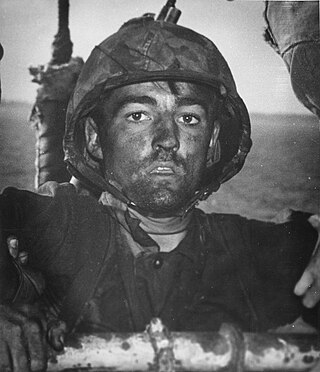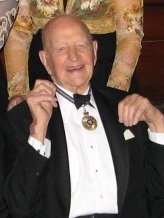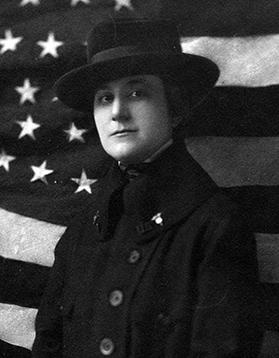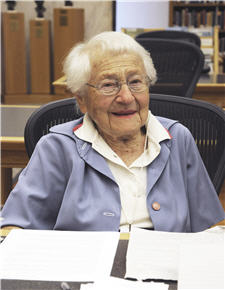
Combat stress reaction (CSR) is acute behavioral disorganization as a direct result of the trauma of war. Also known as "combat fatigue", "battle fatigue", or "battle neurosis", it has some overlap with the diagnosis of acute stress reaction used in civilian psychiatry. It is historically linked to shell shock and can sometimes precurse post-traumatic stress disorder.

The New York State Psychiatric Institute, located at the Columbia University Irving Medical Center in the Washington Heights neighborhood of Manhattan, New York City, was established in 1895 as one of the first institutions in the United States to integrate teaching, research and therapeutic approaches to the care of patients with mental illnesses. In 1925, the Institute affiliated with Presbyterian Hospital, now NewYork-Presbyterian Hospital, adding general hospital facilities to the institute's psychiatric services and research laboratories.

Lawrence Coleman Kolb was an American psychiatrist who was the New York State Commissioner of Mental Hygiene from 1975 to 1978.

Eric Cunningham Dax, AO, FRACP, FRANZCP, HonFRCPsych was a British-born Australian psychiatrist.

The Austen Riggs Center is a psychiatric treatment facility in Stockbridge, Massachusetts. It was founded by Austen Fox Riggs in 1913 as the Stockbridge Institute for the Study and Treatment of Psychoneuroses before being renamed in honor of Austen Riggs on July 21, 1919.
Psychiatry is the medical specialty devoted to the diagnosis, prevention, and treatment of deleterious mental conditions. These include various matters related to mood, behaviour, cognition, and perceptions.
Karl Murdock Bowman was a pioneer in the study of psychiatry. From 1944 to 1946 he was the president of the American Psychiatric Association. His work in alcoholism, schizophrenia, and homosexuality is particularly often cited.

The lunatic asylum, insane asylum or mental asylum was an early precursor of the modern psychiatric hospital.
Clarence Bynold Farrar, SM was an influential psychiatrist, the first Director of the Toronto Psychiatric Hospital, and editor of The American Journal of Psychiatry for 34 years.

The Department of Mental Hygiene (DMH) is a component of the New York state government composed of three autonomous offices:

Elmer Ernest Southard was an American neuropsychiatrist, neuropathologist, professor and author. Born in Boston, Massachusetts, Southard lived in the city for nearly his entire life. He attended Boston Latin School and completed his education at Harvard University. At Harvard, Southard distinguished himself as a chess player. After briefly studying in Germany, he returned to the United States as a pathologist at Danvers State Hospital. Southard held academic appointments at Harvard University and its medical school.
Harry C. Solomon (1889–1982), an American neurologist, psychiatrist, researcher, administrator, and clinician, was among the first to advocate for major changes in public psychiatry. He called for the closure of large, public mental hospitals and replaced with community-based facilities.
Daniel Blain, M.D. (1898–1981) was an American physician and was the first medical director of the American Psychiatric Association (APA), the first professional medical society, founded in the United States in 1844. He may be credited with the leadership which brought changes in the practice of psychiatry after World War II and in advocating the treatment for people with mental disorders.

George Hughes Kirby (1875–1935) was an American physician and psychiatrist, administrator, and educator, who contributed to the advancement of psychiatry in the United States.

Albert Deutsch (1905–1961) was an American journalist and social historian. He received a George Polk Award for "Science Reporting" in 1948.
Walter Earl Barton, M.D. (1906–1999) was an American physician, a psychiatric administrator, and a leader in American psychiatry.
Harvey John Tompkins, M.D. (1906–1983) was an American physician, a psychiatrist, whose professional life was in public service.

Adele Suyder Poston Sanford was a leading psychiatric nurse in the United States and Chief Nurse at Army Base Hospital 117 in La Fauche, France, during World War I. As Chief Nurse of the first and most significant psychiatric hospital to be near the front lines in a war, she treated soldiers with shell-shock and "war neurosis".

Lucy Dorothy Ozarin was a psychiatrist who served in the United States Navy. She was one of the first women psychiatrists commissioned in the Navy, and she was one of seven female Navy psychiatrists who served during World War II.

Zucker Hillside Hospital is a psychiatric facility that opened in 1926, relocated to its present address in 1941, and was renamed in 1999 to its present name.












